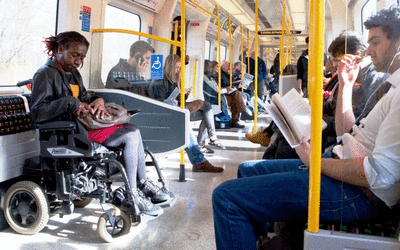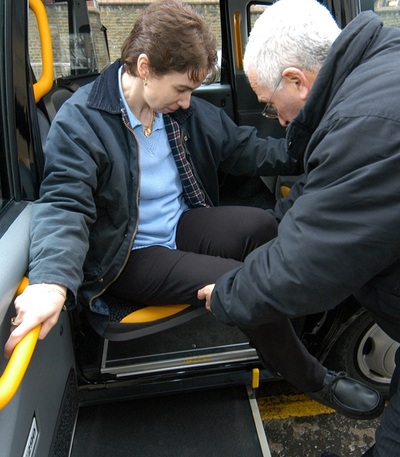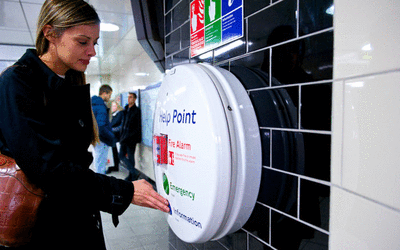Priority seating and other features on board
Priority seats
All buses, Tubes, trains and trams have clearly marked priority seats for anyone who needs them. If one isn't available, ask if someone will give up a seat.
You can apply for a Please Offer Me a Seat badge and card or a Baby on Board badge to help you get a seat if you need one.

Wheelchair spaces
Most vehicles have designated wheelchair spaces. Every bus has one and most train services have at least two, which you can find by looking for the wheelchair symbol on the outside of the carriage or using the level access boarding point.
All taxis and an increasing number of minicabs are wheelchair accessible. To find out more, see step-free access and avoiding stairs.
Some boats can accommodate wheelchairs. Check with the operator before travelling. Some river services can make extra space available for groups of wheelchair users travelling together, if they are informed in advance.
All wheelchair spaces are at least large enough for a 'reference' wheelchair of 700mm x 1200mm.
Audio/visual information
Audible and visible information is provided extensively across our network.

Low floor access
All buses are able to kneel to reduce the step-up. Drivers are expected to pull in close to the kerb. If you need low-floor access and the driver has not already knelt the vehicle, just ask.
While there is a step and gap onto most Tube and Overground trains, we are introducing more low-floor trains, including on the Metropolitan, Hammersmith & City, Circle and District lines.
Most taxis have an intermediate step and a seat that swivels out to make it easier to get in. Ask the driver if you want to use either of these.

Safety and security
Your safety is important to us, and crime is at its lowest ever levels on London's transport network.
CCTV is used extensively across stations, piers, all buses and many trains. Find out how we use CCTV.
- Passenger alarms on trains can be used to contact the driver in an emergency. They are found next to doors and wheelchair spaces
- Help points are available on most platforms and in all ticket halls. They can be used to contact staff in an emergency, or to ask for help or information
- If you feel unsafe or experience any incidents of crime (including hate crime) or antisocial behaviour talk to our staff or the police
- You can also report hate crime by calling 101 or texting 61016. (Some mobile service providers may issue a small charge to text 61016 - find out more on the British Transport police website)